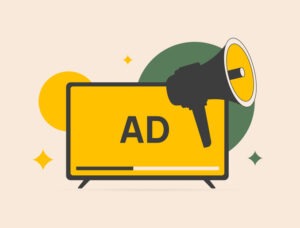Facebook and Google are looking less reliable for political advertisers as a result of the lengthy ad bans related to the 2020 election. Now, campaigns and consultants are searching for new, impactful advertising channels. Enter Podcasts. Podcast advertising is still relatively uncharted, but there are powerful options to reach voters where they are, when it matters.
COVID-19 has had adverse effects across many industries, yet the podcasting industry has only grown in its influence. Approximately 80 million Americans (28% of the US 12+ population) are now weekly podcast listeners. Capitalizing on the surge of listenership to reach voters is top of mind for all political advertisers.
For unfamiliar practitioners open to reaching voters on podcasts, here’s what you need to know. There are two main ways to advertise on podcasts: baked-in ads and dynamically inserted ads. While baked-in ads are a part of the podcast content and live within the content for its lifetime, dynamically inserted ads are specifically served to those who meet your targeting criteria.
Baked-in ads don’t have as many targeting options, but there is one advantage. Because they are often host-read, podcast hosts can turn your product pitch into native advertising, which may decrease the odds of listeners skipping over it. Loyal listeners are also more likely to trust a host’s endorsement because it’s coming from an influencer they’re already familiar with. Best, if you are trying to target a politically engaged audience based in a particular geo, you can reach them by running ads on popular local political and news podcasts.
For Those Who Are Looking To Test Dynamically Inserted Podcast Ads
If you’re new to podcast advertising and are interested in testing the waters, AudioGo is a perfect place to start for dynamically inserted podcast ads. Their self-serve audio advertising platform makes it easy to create and run campaigns on audio services like Pandora and other premium publishers, and most importantly, it’s affordable. You only need a budget of $250 to launch a campaign, and if you can’t record your own audio, their professional voice actors will record your script for only $10.
Their targeting capabilities are also impressive. They allow you to target by state, county, city, zip code, and designated market area (DMA). And as in-language ads rightly command more of your advertising budget, the AudioGo platform provides real-time targeting to Spanish speaking listeners through their integration with Entravision’s Spanish radio.
Although you cannot upload first-party data, AudioGo allows you to define your audience through behavioral segments, music genres, and podcast show topics, including political podcasts. Overall, AudioGo’s affordability and easy-to-use interface make it a great introductory platform for anyone looking to test dynamically inserted ads.
For Those That Need Voter-File Targeting
If you’re looking for a platform that offers more advanced targeting capabilities, Megaphone is a high-quality managed service option. With Megaphone’s minimum budget of $25,000, it might not be the best platform for a podcast ad trial run, but it does have a lot to offer to campaigns with more budget to spend.
Starting with its most impressive capability, it allows for first and third-party data onboarding. If you’re looking for that one-to-one match for your client, Megaphone accepts LiveRamp and Oracle data, making for a seamless data onboarding process. Their platform is also integrated with a library of 60,000+ Nielsen segments, allowing you to target geography, demographics, psychographics, and intent-based parameters.
Their integration with Nielsen can also pass anonymized ad IDs to your demand side platform, allowing you to easily retarget listeners via video or display ads. And lastly, you won’t need to worry about creating your audio as their in-house creative studio will take care of your voice-over talent and production needs. Megaphone’s minimum buy may be steep, but if you’re looking for all the ad targeting capabilities you would find for your traditional video and display ads, Megaphone certainly delivers.
For Those Who Want To Advertise Political Adjacent Content
We can’t write a podcast advertising article without mentioning Spotify, the world’s most dominant audio streaming service. As huge as Spotify is, it unfortunately ranks low for political advertisers because of the platform’s pause on political ads since early 2020. The company has said the pause has to do with not having the “necessary level of robustness” to review the content of political spots.
Though we don’t anticipate the company changing its stance anytime in the near future, we can’t ignore that it is still a great option for direct response, non-profit, brand lift, or politically adjacent client work. Spotify has over 155 million premium subscribers and 345 million monthly active users, and only recently did they allow you to target those listeners through podcast advertising.
Like AudioGo, Spotify offers a self-serve audio platform that allows you to target its listeners based on where they’re located, what type of device they use, age, or interest segment. We genuinely hope to see the day where Spotify makes room for political advertising. But until then, it might not be the right platform for you and your political clients.
Podcast advertising may or may not be the Facebook or Google replacement we are looking for, but now that it has become more accessible, it’s worth exploring. Make sure to keep other non-traditional advertising options in your back pocket as well — out-of-home channels like gas station TV and programmatic billboards can use similar targeting to podcasts and increase your touch points with voters. Every campaign is unique, and with more restrictions to political advertising, we have to think creatively about how we can best help support campaigns and their efforts to inform, persuade, and mobilize voters.
This article was originally published in Campaigns and Elections.




